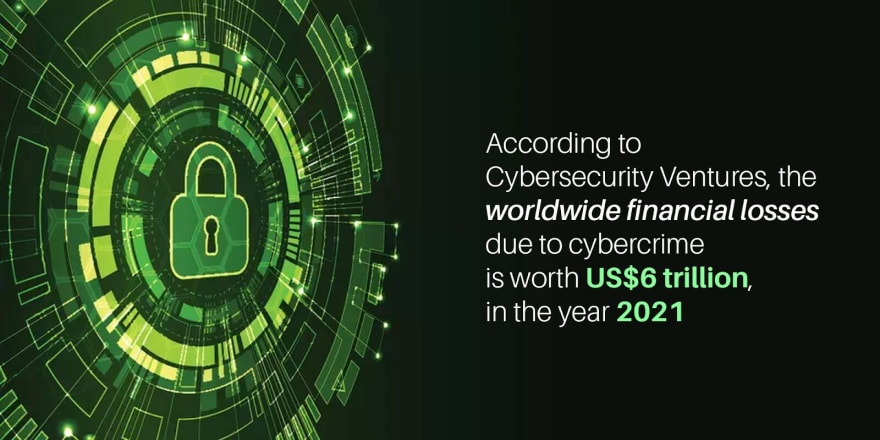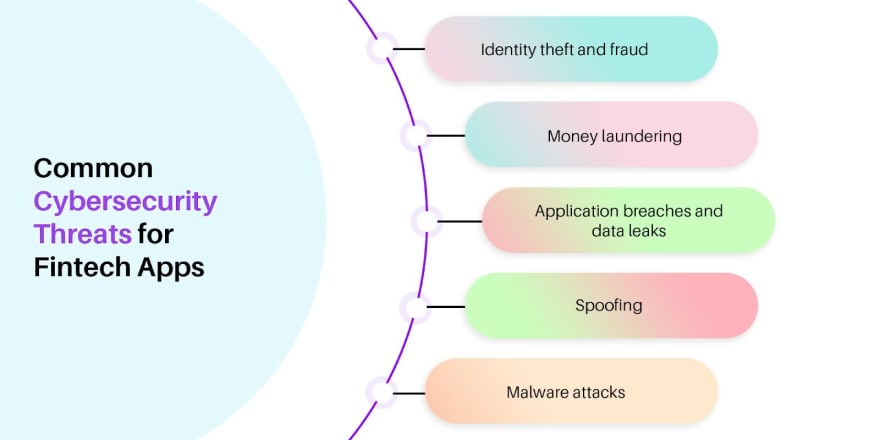
The Fintech industry around the globe is revamping its cybersecurity architecture, bracing itself for a continuous spree of data breaches and cyberattacks. This threat-counter mechanism seeks to minimize the huge financial losses, reputational damage, regulatory consequences, and general mistrust that manifest after cyberattacks and data leaks.
However, in a time when digitization is at its peak, cyber attackers are also expeditiously resorting to newer ways of committing cyber crimes, adopting next-level hacking techniques.
Parallelly, it becomes easier to commit cybercrimes when global Fintech companies rely upon mobile data transfers, end-to-end user systems, electronic payments systems, cryptocurrency trading, and so on, in order to boost their efficiency.
- Major cybersecurity challenges faced by Fintech
- Common cybersecurity threats for Fintech apps
- How robust cybersecurity frameworks aid fintech in mitigating threats
- Technologies & trends to minimize cybersecurity threats for Fintech
- Takeaway
Major Cybersecurity Challenges Faced by FinTech
Following the technological revolution, the Fintech industry has invested in online core banking systems like one-click payments through apps and online purchases to cater to its customers’ growing habit of getting things done on the internet. Cybercriminals have also optimized several attacking strategies to destabilize the Fintech sector—carrying out phishing attacks and DDoS attacks to steal login credentials and sabotage online transactions.
Apart from this, owing to the shift of crucial data to the cloud, the Fintech industry is faced with other prevalent security threats, what with the over-reliance on fingerprint and OTP-based login.
Furthermore, towards the goal of building a robust online transaction system, the banking sector has been collaborating with third-party IT companies to launch distinct payment options such as mobile wallets.
However, huge misalignments with nascent Fintech organizations while mainstreaming the app-based payment protocol have left the BFSI sector prone to cyberattacks. Many times, this also happens due to poor implementation of security guidelines.
Additionally, all the crucial financial data and critical personal information that the Fintech sector handles always makes it a prime target for advanced hacking groups.
Cybercriminals have also optimized several attacking strategies to destabilize the Fintech sector—carrying out phishing attacks and DDoS attacks to steal login credentials and sabotage online transactions.
Common Cybersecurity Threats for Fintech Apps
Identity theft and fraud – Dealing with users’ sensitive data and transferring money with a single click, Fintech apps are at the forefront of cyberattack targets, leaving room for hackers to crack passwords and gain access to accounts. It is a constant challenge to keep users’ digital IDs secure from attackers, through password verification processes.
Malware attacks – The way Fintech provides PII (Personally Identifiable Information) and financial access, makes Fintech apps attractive targets to conduct malware attacks. Below are the most common malware attacks targeting Fintech apps:
•Denial of service attacks: Flooding the application with traffic, making the app inaccessible to its legitimate customers
•Phishing attacks: Posing as businesses or even government agency portals, extracting valuable information from users, to gain access to the application
•Ransomware: Infiltrating system files and encrypting them, to demand a ransom payment for gaining back access to the files
**Data breaching – **As the primary operation of Fintech companies revolves around collecting, managing, and storing bulk data on a day-to-day basis through Fintech apps, the data is more prone to leak due to the rising popularity of online transactions. Once hackers breach payment apps and users’ data, it is the Fintech company that is held responsible by regulators.
Money laundering – Most Fintech companies deal with cryptocurrencies nowadays. Using the anonymous nature of cryptocurrency, cybercriminals can engage in money laundering or even steal money from Fintech’s legitimate customers, resulting in tremendous financial losses and serious legal ramifications.
How Robust Cybersecurity Frameworks Aid Fintech in Mitigating Threats
Even without any massive technological overhaul, the Fintech industry can efficiently protect critical data from getting illegally accessed by cybercriminals, by implementing several multi-oriented cybersecurity tools. Apart from promising to neutralize a wide range of cyberattacks, these highly-resilient and agile threat-monitoring tools can also be effective in providing 24x7 monitoring as well as removing vulnerabilities.
Here’s how Fintech companies can reinforce their cybersecurity safeguards:
•Dynamic Threat Detection: Enhancing proactive threat detection mechanisms can ensure the safety, security, and identification of vulnerabilities resulting from third-party involvement.
•Authentication Based Login: Implementing secured authentication-based login— especially in app-based payment systems—in compliance with government-mandated laws like GDPR, HIPAA, GLBA, etc., can further protect core banking systems from attacks.
•Data Encryption for Customer Privacy: Incorporating high-level data encryption services as a security feature is instrumental in customers’ data protection.
•Collaborative Security Services: Collaborating with multiple security services, the Fintech industry can identify malware, monitor and detect malfunctioning code, and neutralize them accordingly.
•Certifications: It is true that certifications such as ISO 27001 may not be effective for an organization, when it comes to cyberattacks. Nonetheless, they can provide an advantage to a Fintech organization in keeping its cybersecurity risk management program on track. A few considerations in a program, including addressing vulnerabilities, assessment of third-party risk, etc. are extremely valuable.
By leveraging the latest tools and technologies in data security, along with upskilling employees in cybersecurity practices, the Fintech sector can look forward to offering safe and secure financial services to its customers.
Technologies & Trends to Minimize Cybersecurity Threats for Fintech
Here are some of the trending innovations and technologies that are making Fintech apps more secure.
Multi-cloud data storage
The safety that comes with private cloud storage is often preferable, in terms of meeting many financial needs. However, the multi-cloud storage solution is a clear winner, providing financial businesses with enhanced security and transparency in their data usage, besides offering a secure backup system for sensitive data.
AI fraud detection
Leading global Fintech firms, like MasterCard, are reaping the benefits of artificial intelligence (AI) and machine learning (ML) processes, incorporating them into their protocols to predict as well as prevent fraud. Leveraging these systems, companies can analyze data to rank the risks for their clients and examine clients’ behaviors, flagging potential vulnerabilities. AI/ML promises to be the ultimate solution for analyzing bulk data to quickly detect unauthorized usage, helping ensure security in Fintech systems.
Secure Access Service Edge (SASE) networks
Similar to multi-cloud storage, SASE network architecture brings multiple systems on the same page to yield effective security solutions. Combining wide-area networking with network security services, this latest trend in Fintech not only offers comprehensive cloud services but also helps in securing an organization’s operations and ensuring greater functionality.
Blockchain systems
As a decentralized data flow system, blockchain ensures enhanced security by storing data in cryptographic hashes, which renders hacking almost impossible. Because conducting a cybercrime in these cryptographic hashes calls for decrypting every node in the link, which is extremely difficult, the implementation of blockchain in Fintech enables secure and seamless transactions.
Regulatory technologies (Regtech)
Regtech promises to maintain Fintech security in a landscape where the push for broadening cybersecurity regulations comes directly from governments. Managing big data usage with utmost flexibility, these technologies ensure compliance with government-regulated standards, and commonly include data encryption and de-identification mechanisms that safeguard customer privacy.
Takeaway
Regardless of how useful and efficient your app is, if customers cannot trust you with the security of their sensitive data, your adoption and retention rates will drop.
That said, navigating the complex and ever-changing world of cybersecurity in the Fintech industry can be challenging for many organizations.
Ensure top-notch data security in your Fintech app.
Get in touch with us to understand your security requirements.




Top comments (1)
Please use the listings for posts like this, this is not a blog post, it's an ad for your servces. Thank you!